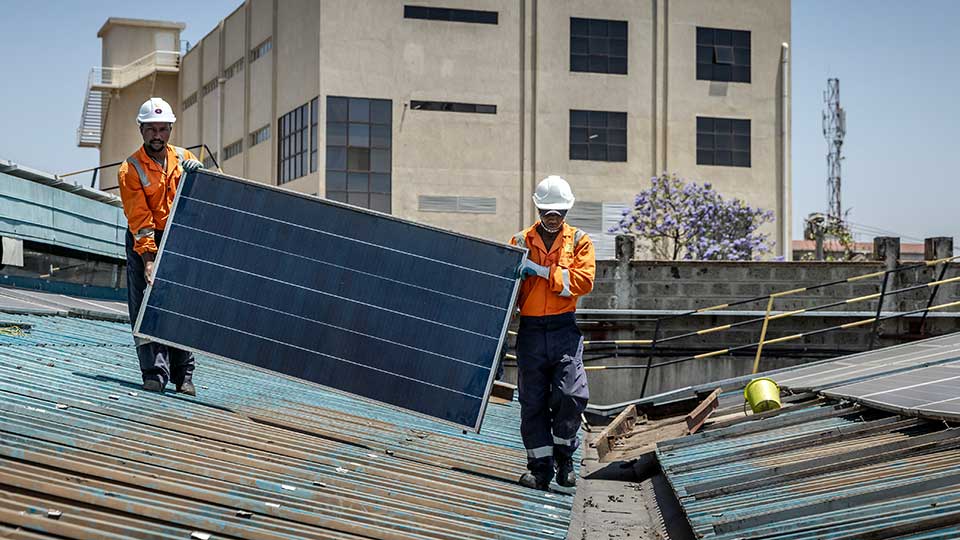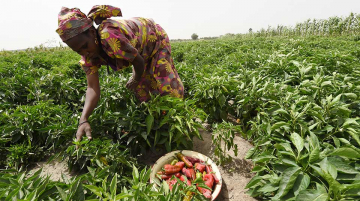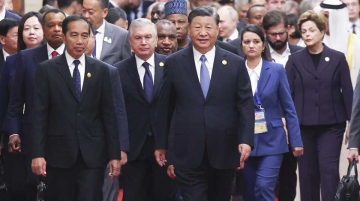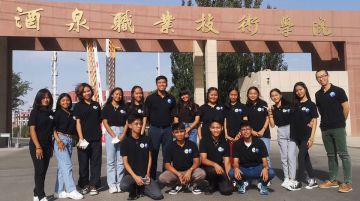
In December 2023, a glimpse of the future of Africa-China relations quietly debuted in rural Limpopo Province, South Africa. The University of Venda unveiled its new Confucius Institute. That part isn’t new – even as the state-supported Mandarin-language institutes face increasing pressure in the Global North, for universities in the Global South, they frequently offer the only way of offering Mandarin-language education to their students.
More surprising is that this is a Green Technology Confucius Institute, with its language teaching paired with providing skills in renewable energy, in collaboration with Hubei University of Technology in China.
While it remains too early to judge how effective its training will be, this pairing of green energy and education, all wrapped in a package of Chinese public diplomacy, is an intriguing development in the context of the upcoming Forum on China-Africa Cooperation. It seems to reinforce direction-setting at the third Belt and Road Forum in October 2023, where green energy emerged as a prominent theme in China’s re-engagement with the world after the zero-COVID era.
The centrality of renewables isn’t an accident. Rather, it reflects two wider trends. First, China has used industrial planning and targeted state support to rapidly grow its renewable sector. The International Energy Agency estimates that China invested about ten times as much as Europe in its solar industry over the last decade. China installed more solar power in 2023 than the entire world commissioned. Chinese firms now occupy 80% of the global solar value chain, from the manufacturing of polysilicon to making solar panels to installing smart girds. This means that Global South countries interested in renewables will almost certainly source components and know-how from China.
If China doubles down on both energy provision and renewables-related training, it could position itself as a unique partner to a continent blessed with a unique youth wave and renewable energy potential.
This market leadership is colliding with a second trend: growing concern among Global North governments about high levels of production in sectors dominated by Chinese companies. Chinese electric vehicles and solar components are increasingly being targeted through tariffs. The dispute has been framed as “overcapacity” boosted by subsidies, a narrative rejected by the Chinese government. I lack the space to unpack the argument here, but it’s important to note that the dispute takes place in the context of rising trade protectionism in some of China’s traditional markets, especially the United States and the EU.
As these barriers rise, Chinese firms are pivoting. This push factor is backed up by a series of pull factors drawing them to the Global South, specifically Africa. The first is massive energy demand. Only about 44% of Africans have access to stable electricity, and this lack has also held back African industrialization. Filling this gap in a sustainable way offers significant opportunities to Chinese companies.
In the second place, the global focus on critical minerals, in part in response to the climate crisis, opens a unique opportunity for certain African countries to boost industrialization by moving up mineral value chains. Chinese companies already play a pivotal role in certain critical mineral sectors (especially in cobalt in the Democratic Republic of Congo.) Rising pressure from African governments to refine more minerals on the continent could set the stage for deeper collaboration between Chinese mining and renewables companies. In theory, mining and refining operations could create an anchor offtake demand that could support broader community electrification. However, that would depend on political will (and relatedly) funding. FOCAC 2024 could provide the occasion to foster such energies.
Third, African countries don’t only suffer from gaps in electricity generation. They also have fragmented and underdeveloped electricity grids that currently make it harder to integrate renewables into their electricity mix. Chinese grid capacity is high, and companies like Huawei are diversifying from data connectivity to energy storage solutions. Considering that data connectivity is another field of dense Africa-China cooperation and another likely FOCAC headliner, integrating grid connectivity could make sense in Africa.
In addition to October’s Belt and Road Forum’s political alignment of green energy as an axis of BRI outreach, shifts in Chinese funding are also aligning to make green energy a key theme at FOCAC. Chinese infrastructure funding has been reconfigured from its mega-project peak in the mid-2010s in response to mounting debt both in Africa and at home. Instead, the Chinese government is emphasizing “small and beautiful” projects with budgets around $100 million to $250 million range, shorter repayment windows and more blended financing. Green energy’s impact on decarbonization boosts its “beautiful” (that is, socially, environmentally and developmentally beneficial) credentials, while the “small” budget sizes are in line with renewables. In addition, renewable energy generation, microgrids and smart grids are all modular, which means that smaller individual budget sizes don’t necessarily preclude regional integration.
One of Africa’s largest challenges is arguably the way the overlap of historical developmental backlogs, current climate stress and a growing youth demographic intersect with increasing difficulties in accessing affordable financing. While Chinese financing is playing a smaller role in Africa than it did in 2016, it is still a significant source of support for African infrastructure, especially because it comes packaged with derisking finance from state insurance agencies and high levels of technical capacity. The latter is especially true for China’s renewables sector.
Which brings us back to the Green Energy Confucius Institute. Training has been a key form of Chinese public diplomacy outreach to Africa. China is the second-largest destination for African students after France and has rapidly increased vocational training on the continent via its Luban Workshop program. The explicit dovetailing of China’s huge green energy capacity with this training responds to African strategies to increase the continent’s skills pool while also boosting electrification and industrialization.
FOCAC 2024 is likely to confirm this overlap further. If China doubles down on both energy provision and renewables-related training, it could position itself as a unique partner to a continent blessed with a unique youth wave and renewable energy potential (39% of the global total) while also grappling with numerous climate and energy challenges.








